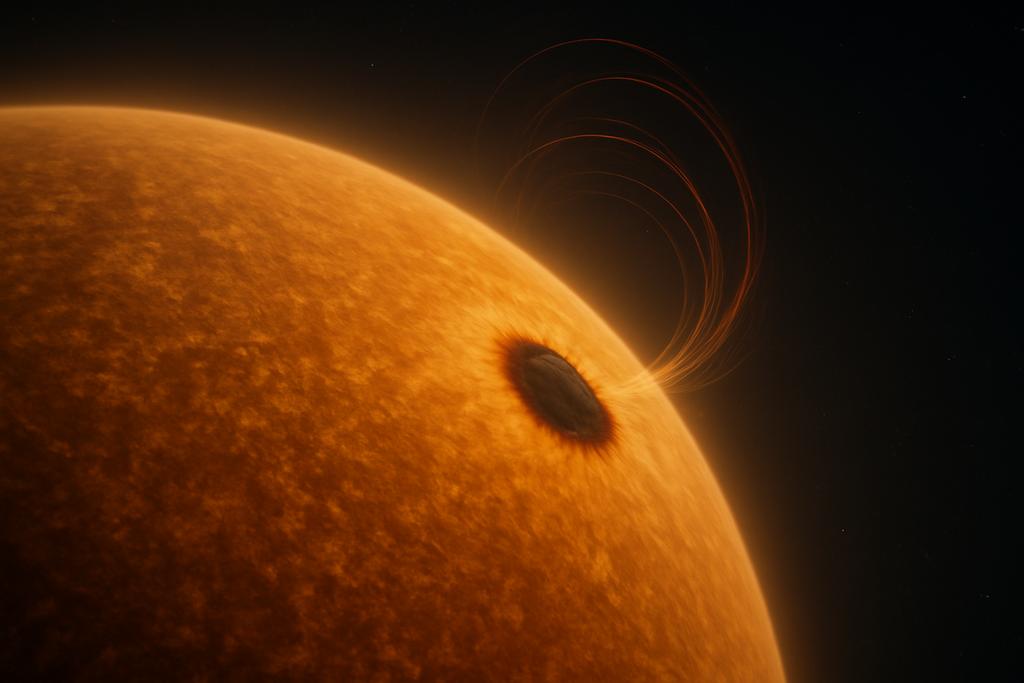Unveiling the Sun’s Magnetic Reach
The Sun, our nearest star, isn’t a placid orb of fire. It’s a dynamic, tempestuous body, its surface roiling with activity. Sunspots, those dark blemishes on the solar disk, are perhaps the most visually striking manifestation of this activity. But these spots are only the tip of a much larger, more complex magnetic iceberg. These spots, and the larger active regions they’re part of, are regions of tremendously amplified magnetic fields—up to a thousand times stronger than the magnetic field in calmer parts of the Sun. These intensified magnetic fields drive a whole range of phenomena, from flares that erupt with the energy of a billion hydrogen bombs, to coronal mass ejections that can send billions of tons of charged particles hurtling towards Earth. Understanding the extent of these active regions’ influence is crucial to comprehending the Sun’s behavior and its impact on our planet.
Mapping the Magnetic Influence
A recent study by Gottfried Mann and Frédéric Schuller at the Leibniz-Institut für Astrophysik Potsdam tackles this challenge head-on. They used a clever simplification to model active regions: a magnetic dipole. Think of it like a tiny bar magnet buried beneath the Sun’s surface. This isn’t a perfect representation of the chaotic, complex reality of solar magnetic fields, but it’s a powerful tool for making estimations. Using this model, they could explore how the magnetic field strength changes with distance from this ‘virtual bar magnet’ – both across the photosphere, the visible surface of the Sun, and outwards into the corona, the Sun’s tenuous outer atmosphere.
Their work reveals a fascinating interplay between the strength of the magnetic field in the active region and the depth of the dipole under the photosphere. Stronger fields and deeper dipoles both lead to a wider spatial reach of influence. This is intuitive: a powerful magnet will have a stronger ‘pull’ than a weak one, and a magnet closer to the surface will be felt more strongly than one buried deep beneath.
Defining the Limits of Influence
The researchers define a ‘sphere of influence’ for the active region’s magnetic field: the distance where the active region’s magnetic field strength drops to the level of the ‘quiet’ Sun’s field. This quiet Sun field is, on average, a relatively weak 3.2 Gauss. For a typical active region with a magnetic field strength of around 1000 Gauss, the field strength from the active region can still be felt up to about 700 million meters (700 Mm) across the Sun’s surface and out to twice the Sun’s radius in the corona. This is a sizable region, demonstrating that the effects of an active region are not as localized as one might assume from just looking at sunspots. In more extreme cases, with much stronger fields and deeper buried dipoles, this ‘sphere of influence’ can stretch even farther.
Implications for Space Weather Forecasting
This work has significant implications for improving our understanding of and ability to predict space weather. Space weather, the disruptive effects of solar activity on Earth’s technological systems, is driven by magnetic fields. A more accurate understanding of the reach and extent of these magnetic fields provides a crucial piece of the puzzle for developing better forecasting models. Currently, space weather forecasting often uses highly complex numerical models to extrapolate the magnetic field from the photosphere into the corona. These are computationally expensive and require incredibly detailed magnetic maps of the Sun’s surface. Mann and Schuller’s dipole model presents a much simpler and quicker approach, providing a valuable first-order estimation of the magnetic field’s influence. It allows for a fast, rough assessment of the potential for disruptive solar events that could impact satellites, power grids, and communication systems.
Beyond the Simple Dipole
It’s important to remember that this study relies on a simplified dipole model. Active regions are much more complex in their magnetic structure than a simple bar magnet, and this model is unlikely to capture every nuance of the magnetic field’s behavior. However, its simplicity offers an advantage: It provides a fast, easily understandable way to get a rough sense of the active region’s magnetic influence. This can inform the design of more sophisticated and comprehensive models, serving as a powerful tool for refining our understanding of solar magnetism. The authors acknowledge the model’s limitations and highlight the importance of more complex magnetic field extrapolations for achieving higher levels of accuracy, but nonetheless showcase the model as a valuable first step in quickly assessing the impact of an active region.
Looking Ahead
The Sun’s magnetic behavior remains a topic of ongoing research. This study represents a significant advancement in our understanding of active regions and their magnetic influence. By offering a relatively simple but insightful model, it paves the way for better space weather forecasting and a deeper comprehension of the complex dynamics of our nearest star. The work highlights the continuing quest to unravel the secrets of solar activity, a journey that not only enriches our scientific knowledge but also has direct implications for safeguarding our technology and infrastructure on Earth.










